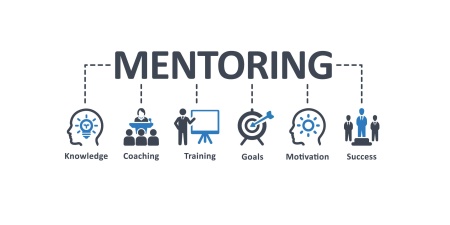By Lyndon Friesen
Conflict can be defined as a misalignment of goals or values between two or more people.
As Amer Obeidi explained in his thesis on the subject for his University of Waterloo doctor of philosophy program, “Conflict is driven by the perceived incompatibility of something of relevance, and the interference of others on the achievement of one’s goals.”
Conflict resolution is a critical conversation that, when approached with the right attitude and skills, can promote healthier workplace relationships by aligning goals and values.
Navigating Resolution
In the workplace, there are many reasons why conflict can occur. One of the challenges in mastering conflict resolution is learning how to stay in control of the emotionality that can come with conflict. During a disagreement, emotions may be triggered by a number of things. These include feelings of insecurity, being bullied or being unable to defend one’s self. The negative emotions related to those states can make a person feel vulnerable. That is a situation that is uncomfortable for most people – especially in a business setting.
Vulnerability in Conflict
People display their vulnerability in a variety of ways, so it’s important to understand how someone may express that sense. Identifying those feelings is beneficial to helping you understand another person’s perspective.
Some individuals may cover their feelings of vulnerability by acting overconfident. Others may address it by sitting in silence. In the workplace, employees can feel vulnerable as a result of various scenarios of conflict, such as:
An Ambush – Feeling unprepared to defend a perspective compared to an individual who has all the facts.
Unexpected Insight – Changing an opinion because someone has made great points that they hadn’t considered previously.
Vulnerability in such situations can take the form of a variety of emotions or reactions, including:
Aggression – Explaining a viewpoint in an aggressive and intimidating fashion.
The Silent Treatment – Responding to conflict with silence.
A Roadblock – Making a positive outcome difficult to achieve.
Disrespect – Refusing to listen to another person’s perspective.
Feelings of vulnerability often lead to negative experiences, with the result that many people avoid conflict at all costs.
Fight or Flight Phenomena
From a medical perspective, the amygdala (a part of the brain) is responsible for processing our emotions. This includes what is known as the fight or flight phenomena. In the book, Calming Your Brain During Conflict, author Diana Musho Hamilton explains that chemical reaction. She writes, “Conflict wreaks havoc on our brains; the amygdala sounds an alarm sending a cascade of chemicals into the body. Stress hormones like adrenaline and cortisol flood our system, immediately preparing us for fight or flight. The active amygdala also immediately shuts down the neural pathway to our prefrontal cortex so we can become disoriented in a heated conversation. Complex decision-making disappears, as does our access to multiple perspectives.”
Fortunately, there are ways to avoid surrendering to these initial, rash instincts. While emotions can be both a friend and an enemy, employees and managers should work to try to fully engage the logical side of the brain when in conflict. Keeping your brain engaged while in a disagreement can help you find other options besides ‘fight’ or ‘flight.’
Eight Great Tips
In my consulting practice, I suggest eight tips anyone can use when a conflict arises to help improve their ability to resolve the issues. These tips are useful personally and also lead to skills that when used, create healthier workplace relationships with colleagues. Here they are:
Plan Before Diving In – At the start of a project, work out project logistics, such as when, where and who will be involved. Prepare for any emotions that may be present at the onset of the meeting.
Set Parameters – Define the outcome for the conflict. Many people will communicate more effectively if their goal is to have a better relationship once they are done.
Seek to Understand – Have an initial meeting to focus on understanding the other person’s perspective. If you feel unprepared or too stressed to assert your position in the first meeting, schedule a second one after you’ve had time to digest the initial discussion.
Practice Curiosity – Curiosity allows you to focus on questions, rather than responses. Often, when you are able to articulate the person’s position well, you end up improving the relationship and resolving the conflict faster.
Empathic Listening – The ability to hear – not necessarily agree with – what someone is saying can be a powerful tool. Using phrases like, “Help me understand,” or “Are you upset with me or the situation?” can help.
Improve Your Emotional Intelligence – Emotional Intelligence is the ability to withhold judgment until you have all the information. Try to avoid judging the other person, even if you disagree with them or firmly believe they are in the wrong.
Assert Your Position – Loyalty is rarely defined as someone who chooses to agree in moments of conflict. Colin Powell, in his book, Decisions and Loyalty, says, “When we are debating an issue, loyalty means giving me your honest opinion, whether you think I will like it or not.”
“I Am Sorry” – Everyone makes mistakes. If, after hearing a person out, you realize that you crossed a line, apologize for it and ask for future accountability. Good apologies do not include the word ‘but.’ “I am sorry, but” is not an apology.
Having a conflict with another person is rarely a positive experience. However, with a shift in the way you view conflict, you can approach these critical conversations with positivity, resolve disagreements in a healthier way and ultimately, improve your own relationships with your colleagues.
Lyndon Friesen developed a love of entrepreneurship during his university years while running a painting franchise. Since then, he has been an entrepreneur and worked on the executive leadership team of a global technology manufacturing company along with many talented business leaders. Now a professional trainer at Ignitor, he develops and delivers programs for business teams that are seeking to improve.
He can be contacted at: ignitorleadership.com,
[email protected], telephone 604-562-9109.









